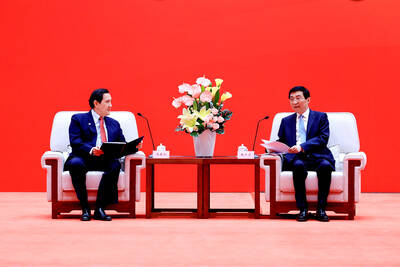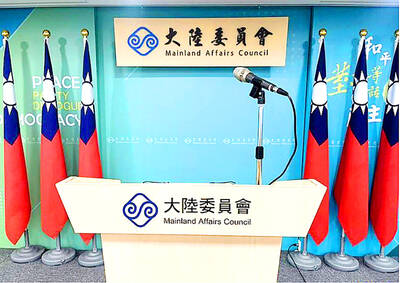With over 2,500 exhibitors stretched out over three massive convention centers, the Consumer Electronics Show (CES) is one of the biggest gadget festivals in the world.
Featuring everything from massive televisions to tricked out cars and boats, there's hardly an electronic gadget on earth not represented in Las Vegas. But several devices stood out for extraordinary innovation, usefulness or efficiency -- or sometimes just for being madly over-the-top.
One laptop that every road warrior was drooling over came from Panasonic and boasted a fuel cell instead of a chemical battery. The new cell uses methanol and can run a laptop for up to 20 hours, throttling the flow of the fuel depending on the power needs of the device. Fuel will be provided in cartridges, though Panasonic has not determined how they will be sold or if they will be disposable or returnable for recharge.
While everyone was hoping that Sony would unveil its hotly awaited Playstation 3, the company confined itself to releasing new televisions, digital cameras and an electronic book reader that might one day do away with the need for paper books.
Easy on the eyes
The eReader will go on sale in April for about US$400, features a battery life of 7,500 page turns and a screen that uses technology from a company called E-Ink to minimize the glare and flicker that typically cause eye strain. The reader device will hold about 80 books in its internal memory, and Sony will sell digital texts at an online store.
Kodak was once considered a company on the verge of extinction as the emergence of digital photography undermined its main film products. But in a turnaround that will be studied for generations at business schools, the company changed direction and re-emerged as the market leader in creating powerful but easy-to-use digital cameras.
Its latest offering is the EasyShare V570, which includes a wide-angle lens and a regular lens that combine to make a 5x optical zoom that doesn't protrude from the body of the camera. The camera also carries built in wi-fi to allow images to be downloaded, printed or emailed without a computer.
Another company reinventing, technology bellwether Hewlett Packard (HP), underwent years of management upheaval as it struggled to cope with the massive changes in the tech world over the last decade.
Recent months have seen HP's financial results improve, and things will keep getting better if the company's first foray into flat-screen televisions is any indication.
At CES, HP introduced nine new high-definition TV models, including a 37-inch LCD television with built-in wired and wi-fi capability. That means owners can use the monitor to stream audio, video and photo slide shows from their PC and or the Internet.
Internet phones
Netgear Inc showed off the first wireless voice-over-Internet-protocol phone that doesn't require a computer. The networking equipment firm said it is working with Internet phone pioneer Skype to develop the Skype Wi-Fi phone, which can be used to make free calls over the Internet. Skype was purchased by eBay last year.
Bluetooth has long been touted for its ability to connect machines without the use of cables. One of its most popular uses has been to link headsets to mobile phones, with the drawback that such headsets have been relatively large to hold all the necessary Bluetooth technology.
Now, Motorola's H5 Miniblue has miniaturized a system to just 33mm, and the device is barely visible because it fits inside the ear like an iPod earbud. The Miniblue ingeniously does away with a conventional microphone and registers the user's voice vibrations via bone conduction through the ear canal.
Nokia, meanwhile, attracted attention with its Series 60 3rd Edition Mobile Browser, which for the first time makes the Internet a comfortable place to visit from your phone. Previous mobile-phone browsers have done poorly at both putting Web pages on the small screens of cellphones and offering convenient navigation systems using telephone keypads.
But Nokia's new Series 60 phones run a new browser based on Apple Computer's Safari browser. Full Web pages load quickly as small images, and surfers use the numeric keypad to move a red box around the page.

BUILDUP: US General Dan Caine said Chinese military maneuvers are not routine exercises, but instead are ‘rehearsals for a forced unification’ with Taiwan China poses an increasingly aggressive threat to the US and deterring Beijing is the Pentagon’s top regional priority amid its rapid military buildup and invasion drills near Taiwan, US Secretary of Defense Pete Hegseth said on Tuesday. “Our pacing threat is communist China,” Hegseth told the US House of Representatives Appropriations Subcommittee on Defense during an oversight hearing with US General Dan Caine, chairman of the Joint Chiefs of Staff. “Beijing is preparing for war in the Indo-Pacific as part of its broader strategy to dominate that region and then the world,” Hegseth said, adding that if it succeeds, it could derail

CHIP WAR: The new restrictions are expected to cut off China’s access to Taiwan’s technologies, materials and equipment essential to building AI semiconductors Taiwan has blacklisted Huawei Technologies Co (華為) and Semiconductor Manufacturing International Corp (SMIC, 中芯), dealing another major blow to the two companies spearheading China’s efforts to develop cutting-edge artificial intelligence (AI) chip technologies. The Ministry of Economic Affairs’ International Trade Administration has included Huawei, SMIC and several of their subsidiaries in an update of its so-called strategic high-tech commodities entity list, the latest version on its Web site showed on Saturday. It did not publicly announce the change. Other entities on the list include organizations such as the Taliban and al-Qaeda, as well as companies in China, Iran and elsewhere. Local companies need

CRITICISM: It is generally accepted that the Straits Forum is a CCP ‘united front’ platform, and anyone attending should maintain Taiwan’s dignity, the council said The Mainland Affairs Council (MAC) yesterday said it deeply regrets that former president Ma Ying-jeou (馬英九) echoed the Chinese Communist Party’s (CCP) “one China” principle and “united front” tactics by telling the Straits Forum that Taiwanese yearn for both sides of the Taiwan Strait to move toward “peace” and “integration.” The 17th annual Straits Forum yesterday opened in Xiamen, China, and while the Chinese Nationalist Party’s (KMT) local government heads were absent for the first time in 17 years, Ma attended the forum as “former KMT chairperson” and met with Chinese People’s Political Consultative Conference Chairman Wang Huning (王滬寧). Wang

CROSS-STRAIT: The MAC said it barred the Chinese officials from attending an event, because they failed to provide guarantees that Taiwan would be treated with respect The Mainland Affairs Council (MAC) on Friday night defended its decision to bar Chinese officials and tourism representatives from attending a tourism event in Taipei next month, citing the unsafe conditions for Taiwanese in China. The Taipei International Summer Travel Expo, organized by the Taiwan Tourism Exchange Association, is to run from July 18 to 21. China’s Taiwan Affairs Office spokeswoman Zhu Fenglian (朱鳳蓮) on Friday said that representatives from China’s travel industry were excluded from the expo. The Democratic Progressive Party government is obstructing cross-strait tourism exchange in a vain attempt to ignore the mainstream support for peaceful development